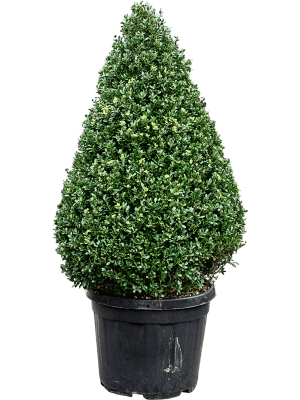
Ilex crenata 'Dark Green' (120-140)
Pyramid
5ILCDPY45
Origin
The Hydrangea petiolaris, alternatively known as the climbing hydrangea, originally hails from the cold regions of Siberia, Japan and Korea. This plant was brought to Europe in the 19th century and has since commonly been grown in gardens and parks.
Characteristics
The Hydrangea petiolaris is a sturdy climbing plant, capable of reaching heights of up to 15 metres. This ground-covering plant is known for its large, heart-shaped leaves and cream-white flowers which form in flat clusters. The flowering period lasts from June to August. The plant's branches attach themselves to walls and fences, often eliminating the need for additional support.
Care
Despite the Hydrangea petiolaris's origin in cold climates, it requires little special care in temperate climates. The plant prefers a location in partial shade, but can withstand full sun. The soil should be well-draining yet moist. Pruning is not necessary, but can be done after flowering to shape the plant or remove outdated branches.
| Phone NL | +31 885 014 000 |
|---|---|
| Phone NGC | +31 885 014 014 |
| Phone FR | +33 (0)130 760 344 |